Nancy Holt: Sky Mound
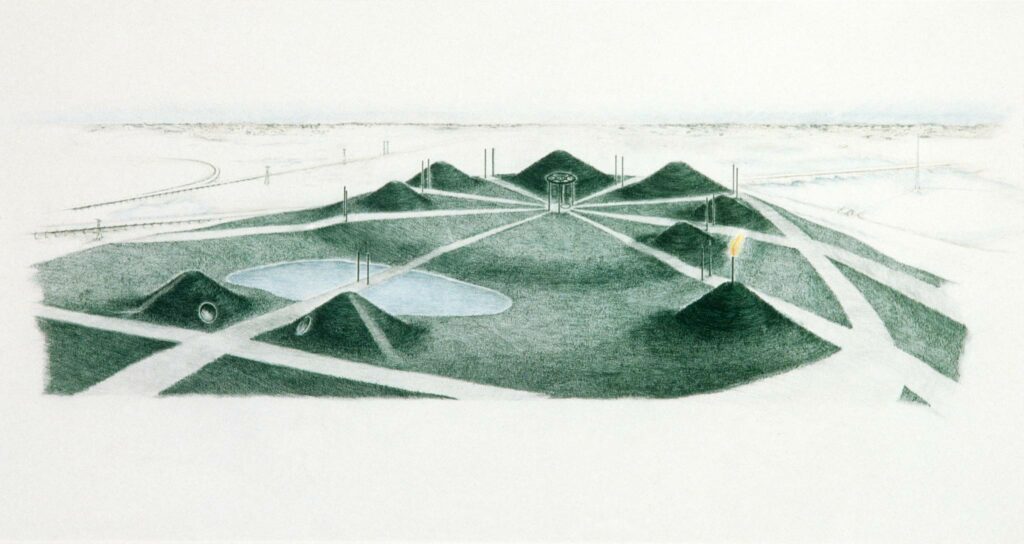
Nancy Holt (1938-2014) was a member of the earth, land, and conceptual art movements. A pioneer of site-specific installation and the moving image, Holt recalibrated the limits of art. She expanded the places where art could be found and embraced the new media of her time. Across five decades she asked questions about how we might understand our place in the world, investigating perception, systems, and place. Holt’s rich artistic output spanned concrete poetry, audio works, film and video, photography, slide works, ephemeral gestures, drawings, room-sized installations, earthworks, artists’ books, and public sculpture commissions. Throughout, drawing was a fundamental part of her creative thinking.
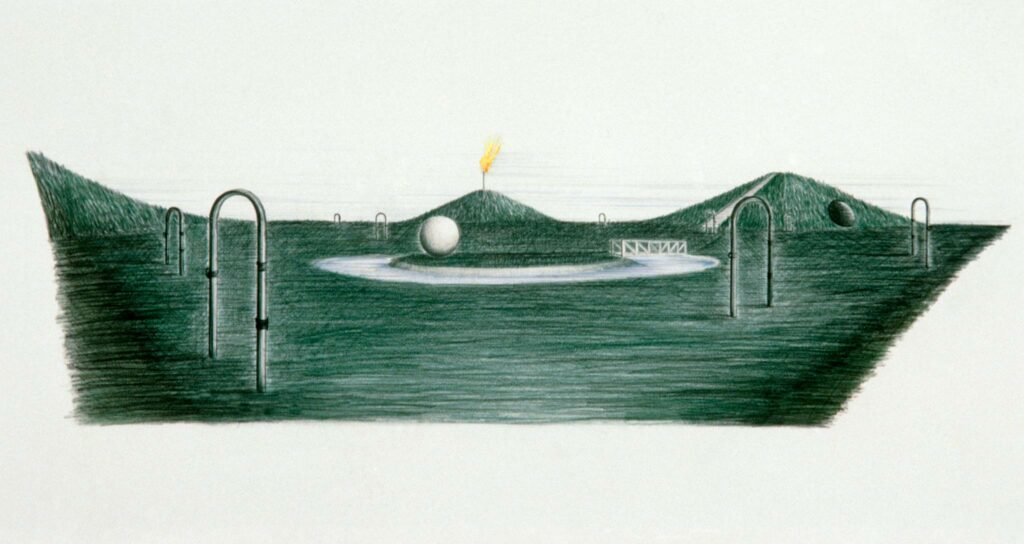
Her most ambitious project is one in suspension: Sky Mound, started in 1984. Four miles from Manhattan, in between the New Jersey Turnpike and the Amtrak railway, lies a massive landfill. Holt was recruited to design the reclamation of the site, which would both mitigate environmental damage and transform the landfill into a sculptural observatory. Holt described how, after her first visit, she understood that the ‘landfill is a place where sky and ground meet, where you can track the Sun, Moon, and stars with the naked eye, and where you have 360 degree panoramic views of Manhattan, Newark, the Pulsaki Skyway, networks of highways and train tracks, old steel turn-bridges, and here and there decaying remnants of the Industrial Revolution. As soon as I saw the site I knew that I wanted to transform the landfill into a park/artwork.’ [1]

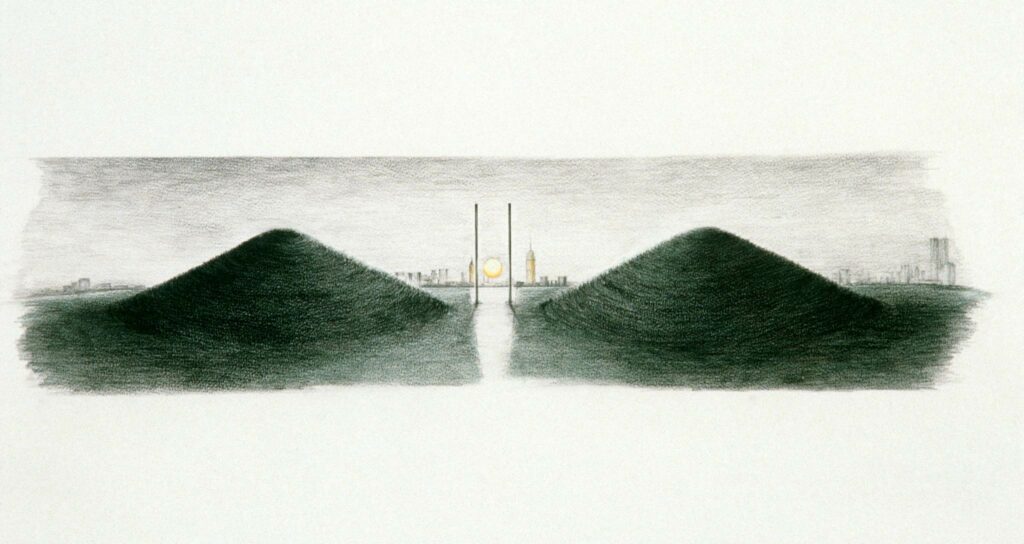
Holt planned Sky Mound to cover the whole site, which grew into a 100 foot high hill, and developed many drawings to express her thinking. The earthwork would be divided into a solar and a lunar area, incorporating gravel paths in alignment with the solstices, a large gunite sphere encircled by a moat to represent the moon, methane flares visible from planes overhead, and a pond that would attract wildlife and drain surface water from the landfill. This pond is the only realised portion of Holt’s design; the rest is delayed indefinitely. Her vision for Sky Mound was as sanctuary for wildlife and people, a moment of calm in sprawling and swarming urbanism. This oasis-observation point would look over industrial architecture and the urban conglomerations of Jersey City and New York, surrounded above and around by networks of roads, railroads, and incoming planes to Newark Airport, while under the observer’s feet would be the waste from this built environment.
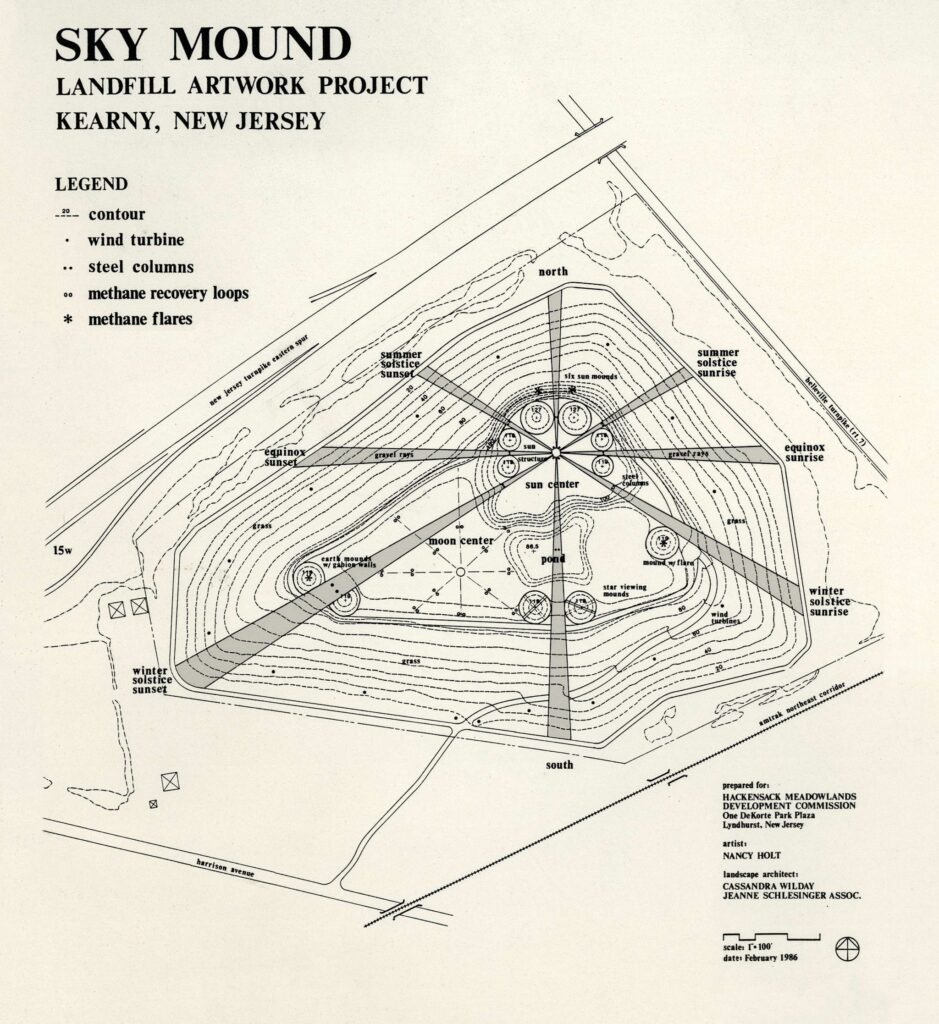

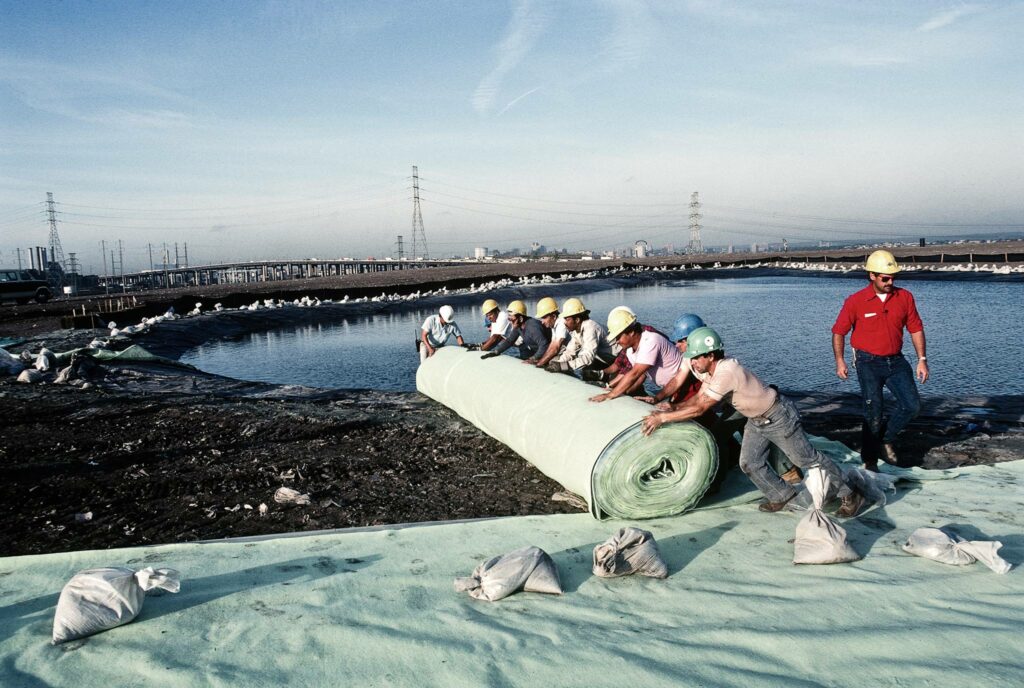
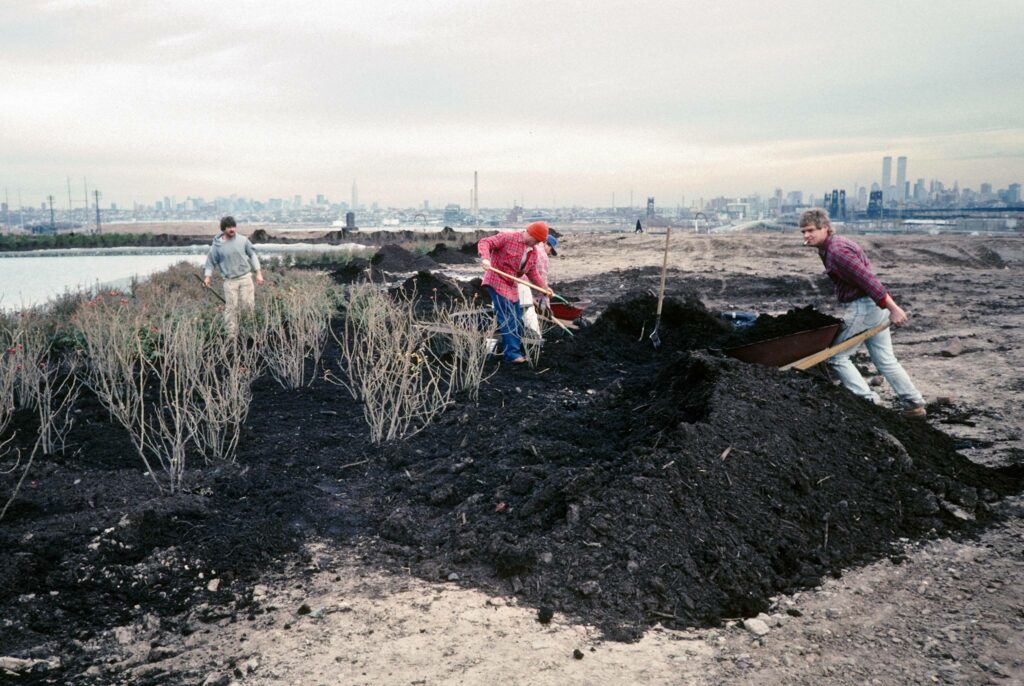

© Holt/Smithson Foundation, Licensed by VAGA at ARS, New York.

In the 1980s Holt turned her attention to the fabric of the built environment with functional sculptural installations she termed System Works. Using standard industrial materials designed for heating, ventilation, lighting, drainage – as well as the raw materials of fossil fuels and waste – the System Works are connected to the systems we humans have created, and take for granted. As Holt described, each of these sculptures are ‘exposed fragments of vast hidden systems, they are part of open-ended systems, part of the world.’ Sky Mound was Holt’s second reclamation project, the first being Dark Star Park (1979–84) in Rosslyn, Arlington Country Virginia, which was completed the year Sky Mound was started.
Many, but not all, of Holt’s sculptural ideas were realised; Sky Mound sits in a suspended state, with her drawings the clearest expression of her ideas. Holt used drawing as a medium to think through and articulate her thinking. Her works on paper range from careful detailing to mathematical calculations and full renderings, and this small selection of drawings for Sky Mound show this scope. Holt saw clear antecedents in archaeological midden mounds and pre-Columbian mounds, and she saw this project as a new model for thinking about how we might open our eyes to the waste that we create.
For more work by Nancy Holt, visit the Holt/Smithson Foundation’s website.
Notes
- Nancy Holt, Sculpting With the Environment – A Natural Dialogue, 1995.
